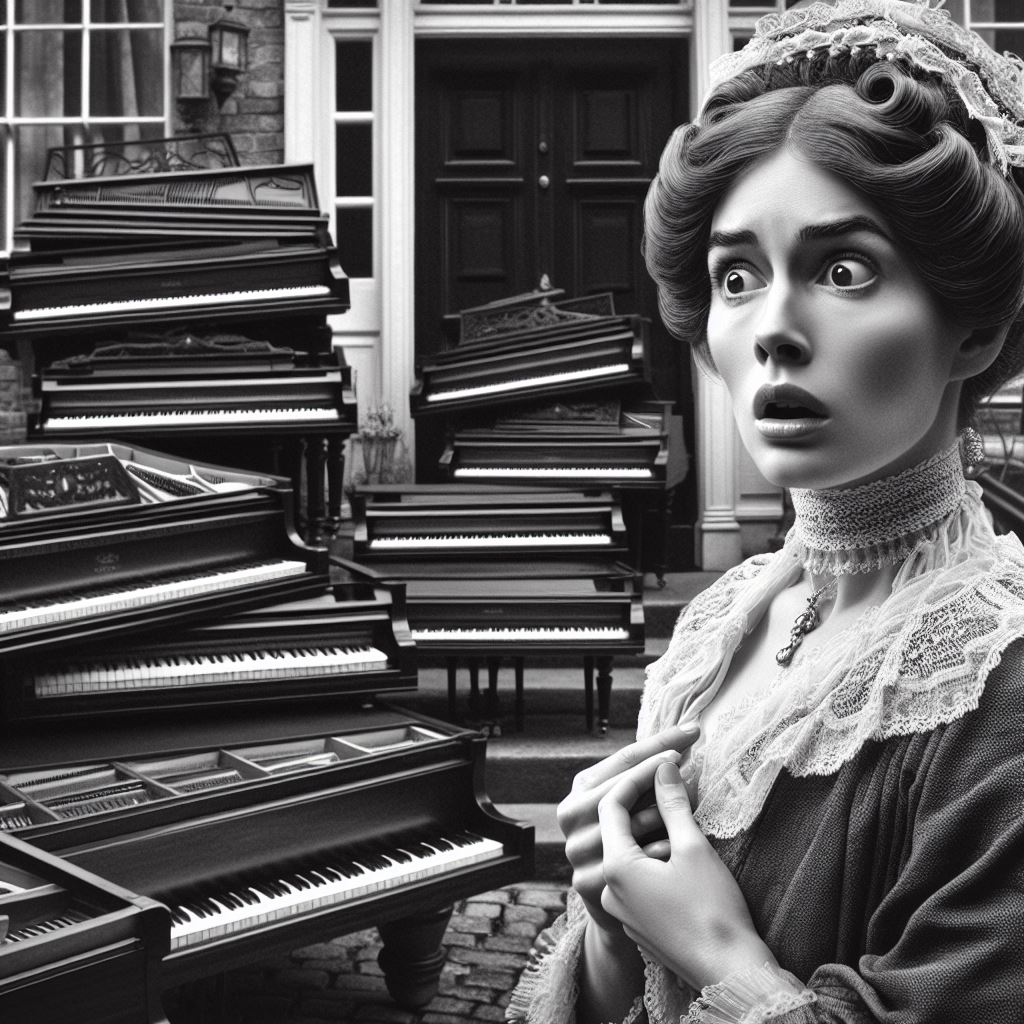Solomon Eagle was a preacher who claimed to predict great events. Just in case nobody was paying attention, he stormed around London with a flaming brazier on his head. During the great plague of 1665, he added to the general misery by screaming at his fellow Londoners that a great fire was about to consume them. And sure enough, in 1666 – much of the city burned down in the Great Fire of London.
Solomon Eagle – also known as Solomon Eagles and Solomon Eccles – was a Quaker, a member of a Protestant sect known as the Society of Friends. They achieved a certain notoriety in the mid-17th century in England by protesting in public places with no clothes on – totally naked. The intention was to make a statement about the spiritual nudity of the people but most folk just viewed the whole thing as a joke. Eagle sported a loin cloth but was otherwise naked.
The plague of 1665 ripped through London in the years just after the restoration of the monarchy under King Charles II and the end of the Oliver Cromwell experiment with a godly republic. For Protestant zealots, this was bad news. It was a return to the pseudo-Catholic kingdom of the Stuart dynasty with all its frippery and finery. The plague, therefore, was God’s judgment on the English realm. And in very biblical terms, plague would be followed by fire.
Solomon Eagle became such an unmissable feature of plague-struck London that he even turned up in the journal of the plague written by the author and journalist Daniel Defoe – author of the novel, Robinson Crusoe. Defoe noted that people during the plague “were more addicted to prophecies and astrological conjurations, dreams and old wives’ tales, than ever they were before or since”. And Eagle satisfied that craving for dire prophecy.
Defoe wrote of Eagle that he “ran about naked, except a pair of drawers about his waist, crying the day and night, ‘Oh, the Great and the Dreadful God’, and said no more, but repeated these words continually, with a voice and countenance full of horror”. The diarist Samuel Pepys also witnessed Eagle in full flow shouting at people to repent. The gist of his message was that in forty days time, a great inferno would engulf them all. Another witness heard him shriek:
Do you hear this, oh sinners? God will proceed against you in the day of his wrath., though he hath borne with you in the day of his patience. Oh, how many hundred years hath he spared this city. But now…plagues shall come upon it and desolation and it shall be utterly burnt with fire – for strong is the Lord who judgeth it.
His attire was reminiscent of John the Baptist in the wilderness and his tall, lanky frame, with jet-black, lank hair was illuminated in the dark streets of pre-Fire London by the brazier on his head. One of his favourite spots to harangue Londoners was the site of the Eleanor Cross at Cheapside, in the middle of the old city of London.
Normally, he might have been scoffed at, but London’s citizens were worn down and scared of the pestilence. Outside the city, huge pits were crammed with corpses as naked as Eagle – and through the night, wagons trundled out of the city gates with yet more dead. To say he captured the mood would be putting it mildly.
So, why was London being punished by God? Because it had been so wicked. And what was the solution? Lots of repentence. And by all accounts, his rants went on by day and night. Those trying to sleep and hoping the plague had passed them by were told a yawning grave awaited their sinful body. While at daybreak, Eagle could be found on top of the nave of old Saint Paul’s Cathedral – the pre-Fire Gothic version – still screaming. On occasions there was some respite while he disappeared with rumours circulating that he hung out in secret tunnels under Saint Paul’s.
There is an implausible tale that King Charles II and his decadent courtiers returned to London one night – having abandoned it during the plague for their safer rural estates – to hold a masque ball at Saint Paul’s – mocking death. Each guest danced with somebody dressed as a skeleton. The king himself was disguised in a figure-hugging costume as a cadaverous form. Everybody was galavanting around in the dark until a furious Solomon Eagle appeared in their midst.
“Know all ye who make a mockery of death, that his power will be speedily and fearfully approved upon you!”
At which point, the monarch and his guests decided the evening was no fun anymore and made for their carriages.
One man got so fed up with Solomon Eagle that he fired at him from his window. The story ran that Eagle stood his ground and the bullet whizzed past him, hitting the assailant’s own son. Eagle then delivered a vitriolic sermon declaring that the sins of the fathers would be visited on their sons.
The Great Fire of London in 1666 began on Pudding Lane as an accident and spread rapidly through the timber-framed buildings of the city. The medieval metropolis was largely destroyed. One legend had Eagle screaming from the top of old Saint Paul’s Cathedral as it was consumed in flames. The molten lead ran in streams from the roof and the pillars cracked under the heat while Eagle darted like a madman from one part of the church to the next.
Suddenly, he shouted: “It is true: my words have come to pass! It burns! It burns! And will be utterly consumed.” At which point, he fell headlong into the flames. However…that story does not appear to be true. In fact, Eagle lived until January 2, 1682, dying in Spitalfields.
For centuries, the name of Solomon Eagle was used to refer to those making rash prophecies of doom. To mock somebody warning about a perceived danger, a newspaper would accuse them of being a latter-day Solomon Eagle.
Must admit that Solomon reminds me of the 1960s pop band “The Crazy World of Arthur Brown” and their front man singing “Fire” with flames on his head. You can watch that performance HERE.












